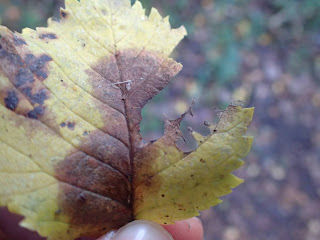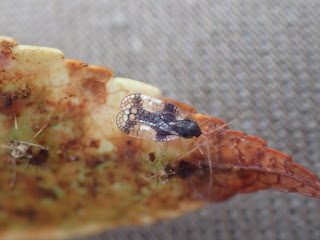21st October 2018
For the last few years I've helped out with a fungus walk at Strumpshaw Fen, and the time had come round for the first of this years two walks. There appear to be fewer fungi around than recent autumns, probably due to the prolonged period of dry weather over the summer, but the walk was still fully booked and we managed to find around 35 species. There was a decent range too, with Milkcaps, Brittlegills, Bonnets, Inkcaps, Stinkhorn, brackets and jelly fungi all seen. Phlebia rufa, an encrusting jelly fungus was a new one for me.
Bitter Bracket
Snapping Bonnet
Stinkhorns
Phlebia rufa
Conical Brittlestem
There was little time for looking at non-fungal species, but I did notice some lighthouse galls on Ground-ivy, several Agromyzid mines and the feeding signs of Elm Zigzag Sawfly. After the walk it was straight back to Norwich, where after a long queue we got in to see Chris Packham give a talk encompassing photography and environmental activism amongst other topics.




















































